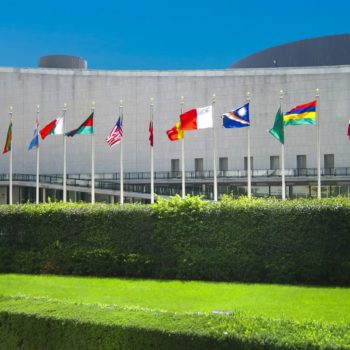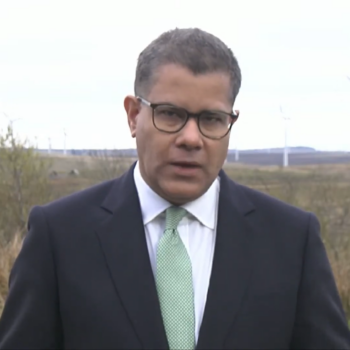What does success at COP26 look like, and how can we get there? In Part 1 of this blog to mark 100 days to go until COP26, we outline what a ‘Glasgow Package’ to keep 1.5C alive could look like. In Part 2, we examine the path for landing this between now and COP26.
President Designate Alok Sharma’s mission at COP26 sounds simple: to ‘Keep 1.5˚C Alive’. In other words, when countries meet in Glasgow this November their priority should be putting in reach the Paris Agreement’s ambition of ‘pursuing efforts’ to limit global warming to 1.5˚C.
Leaks of forthcoming Intergovernmental Panel on Climate Change’s (IPCC) reports assessing the state of the climate show even more certainty about the risks of breaching the 1.5˚C limit. ‘Keeping 1.5˚C alive’ is an unquestionable mission.
Yet global average temperatures have already warmed 1.2˚C since pre-industrial times, and the collective ambition of countries’ efforts falls short of what is required for a 1.5˚C trajectory.

The Paris Agreement’s ‘ratchet mechanism’ was designed to progressively drive up ambition in emissions reduction every 5 years towards that goal. COP26 is a first test of this, the stage on which countries’ raised 2030 emissions reduction ambition is judged. It’s only the first of the successive cycles of ratcheting, and with a gaping emissions gap it was always unlikely it would be filled straight away. Yet with the latest science now showing the window to achieve 1.5˚C is closing, securing emission reductions in this decade has reached a new level of urgency.
The emissions gap isn’t the only challenge of keeping 1.5˚C alive. To implement climate targets, economic activity must swing behind action, and regulating and shifting global financial flows from polluting to clean infrastructure is essential. Mobilising finance to support this transition in developing countries will be necessary too.
Keeping 1.5˚C alive is also as much about emissions reductions and the finance to deliver it, as it is about adaptation and loss & damage. With devastating climate impacts already hitting, money must be mobilised for communities to adapt to climate risks and prepare for unavoidable loss & damage beyond adaptive capacity.
A Glasgow Package
What exactly is it that can be achieved in Glasgow? The COP26 negotiating agenda is focused on issues such as carbon markets and transparency requirements for reporting. These are critical to protecting the integrity of the Paris Agreement, but much more is needed at COP26 – both within and beyond the UNFCCC negotiations – to keeping 1.5˚C in reach. This requires outcomes to close the many gaps to achieving that – the emissions gap, but also the gaps to protecting against climate impacts and the finance required to achieve this.

Many of these outcomes are crucial to land before Glasgow. Immediate action is needed to:
- Narrow the emissions gap with new, enhanced 2030 climate targets (NDCs) aligned with 1.5˚C
- Fulfil the $100bn a year climate finance commitment with new climate finance pledges, and a delivery plan beyond the $100bn and addressing finance quality issues through to 2025
- Enhance action on adaptation and loss & damage, with new finance for adaptation and new political space for addressing loss & damage
- Accelerate sectoral transitions across the real economy, with further progress on ending coal, aligning finance with the Paris Agreement and more
At COP26 (right hand column of the diagram) countries must commit to accelerating action in 2022-2023 – before the Global Stocktake – to ensure a decade of delivery on the Paris goals. Much of this could be captured in negotiated text at Glasgow (i.e., in 1/CP.26 decisions); some of it could also be agreed upon between governments directly or articulated by leaders. Either way, to keep 1.5˚C alive political agreements at Glasgow will need to:
- Accelerate emissions reductions for a 1.5˚C pathway by committing to revisit 2030 NDCs by the 2023 Global Stocktake and extending the mandate for long-term strategies (whilst preserving the integrity of Paris Agreement in a finalised rulebook)
- Take climate finance to the next level by setting out a forward process for the post-2025 finance goal
- Close the gaps on adaptation and loss & damage by establishing a process for operationalising the global goal on adaptation and providing clarity on how to address loss & damage
- Turbocharge real economy transformation by striking new political deals on ending coal, fossil fuel finance, deforestation
Together, both new climate policies and implementation before COP26, plus deals agreed at COP26 to accelerate action on the Paris commitments, adds up to a balanced and ambitious Glasgow Package. This will enable us to close the gaps for 1.5˚C across emissions, climate finance, adaptation, loss and damage, and real economy transformation (left hand column of the diagram).
In Part 2 of this blog, we will examine the path for landing a Glasgow Package at COP26.



